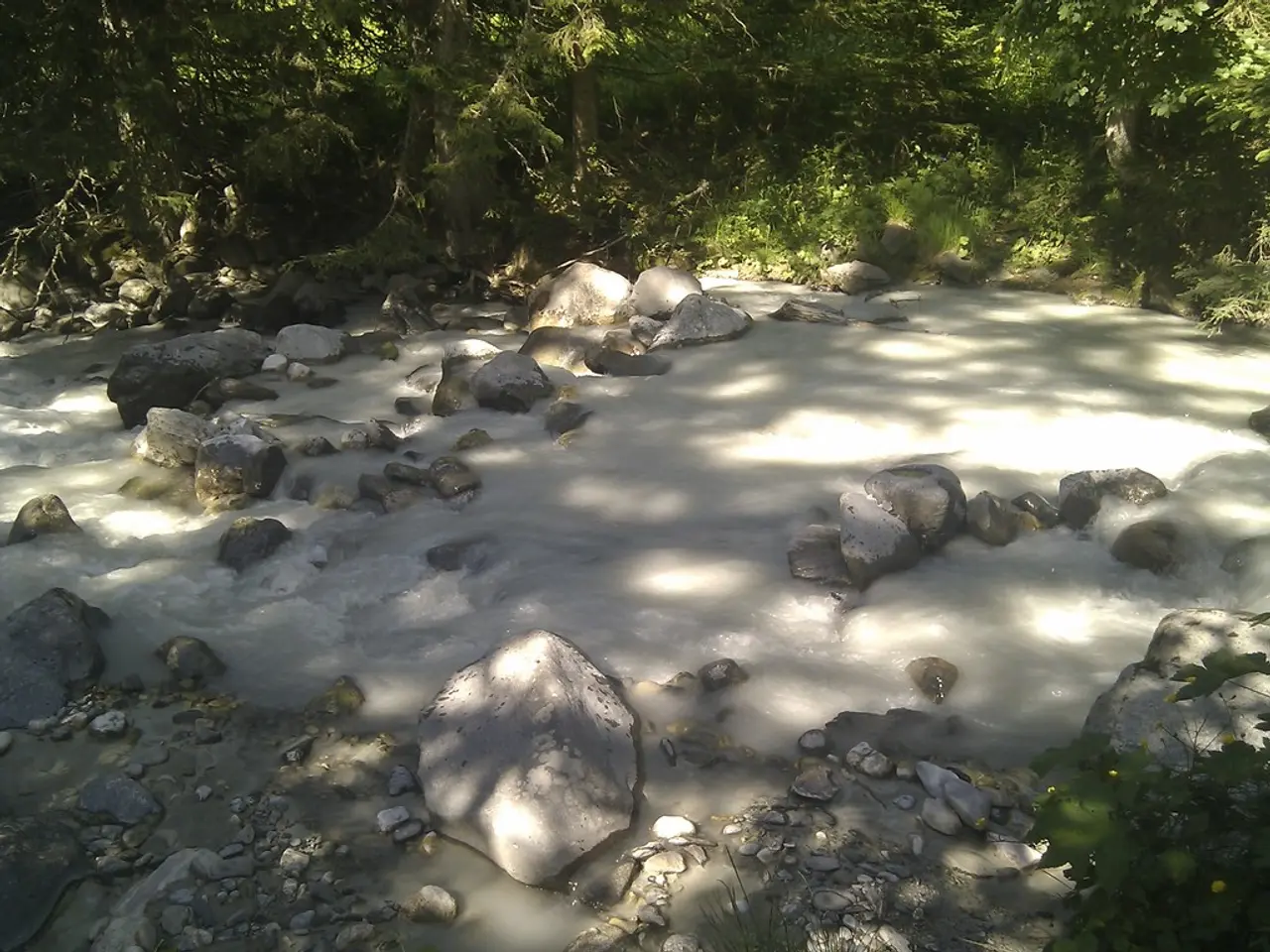Managing Stormwater Efficiently through the Use of Permaculture Planning
In the realm of sustainable land use and community development, permaculture stands out as a solution-focused approach that works in harmony with nature. This innovative practice, which emphasizes principles like observing and interacting with natural systems, is increasingly being recognized for its potential in managing stormwater effectively.
At the heart of permaculture design lies a focus on natural soil fertility and water management, aimed at enhancing biodiversity and ecosystem resilience. Key to this approach are techniques such as swales, bioswales, rain gardens, and constructed wetlands, which are used to manage water effectively in both urban and rural landscapes.
One of the primary benefits of permaculture in stormwater management is its ability to slow down, spread, sink, and store rainwater on the landscape. This approach reduces runoff, improves water quality, and supports plant growth while minimizing the risks of flooding and water pollution.
Rain gardens and bioretention basins, for instance, are shallow depressions planted with native shrubs and perennials. They capture runoff from roofs or pavement, allowing stormwater to infiltrate slowly into the soil, thereby reducing runoff and improving water quality.
Designing water-harvesting earthworks and small-scale structures, such as rock dams and swales, also plays a crucial role in slowing water flow, controlling erosion, and promoting infiltration to recharge groundwater directly and indirectly support plant growth.
In cities, where hard surfaces cause water to flow too fast and carry pollutants, these nature-based solutions are particularly essential. Planting densely with ground covers, mulch, and trees further reduces bare soil exposure, thereby minimizing evaporation and surface runoff. Tree canopies also reduce irrigation needs by shading soil and plants, thereby conserving water.
Incorporating greywater filtration systems, using plant-based filters such as reed beds to reuse household water for irrigation, and employing smart irrigation techniques like drip systems and ollas (clay pots for slow water release) are additional strategies that enhance water cycling within the property.
Moreover, systems like wicking beds, which store water reservoirs beneath raised beds and supply moisture directly to plant roots through capillary action, make irrigation more efficient.
These practices, when implemented effectively, embody the permaculture principles of working with nature to capture and retain water on-site, improving soil health, supporting biodiversity, reducing flood risk, and decreasing dependence on external water supplies. For effective implementation, proper site assessment and design are essential to place these elements where they maximize water retention and support plant health.
Education and community projects also play a significant role in increasing support for permaculture-based stormwater solutions, boosting awareness and engagement in the community. As climate change and urbanization make effective stormwater management urgent, permaculture offers a promising solution to create landscapes that prevent flooding and pollution.
Regular checks and care are essential to keep permaculture stormwater systems working well and adaptable to environmental changes. For instance, the average American uses 88 gallons of water daily, with industrial use increasing the number. With aquifers drying out fast, collecting rainwater is crucial. A well-built swale can hold 22,900 gallons from a 1200 square-foot house each year.
States and cities are starting to encourage rainwater collection and water conservation, with California allowing people to use rain barrels for non-drinking water without a permit. Effective stormwater management requires good policies and rules, such as incentives for green infrastructure, limits on impervious surfaces, and water quality standards.
In conclusion, permaculture offers a sustainable and effective approach to managing stormwater, one that is in tune with nature and beneficial for both the environment and our communities. By implementing these practices, we can create resilient landscapes that not only withstand the challenges of climate change but also foster a healthier, more sustainable world.
Read also:
- Post-Heart Attack: Consequences
- Heart Disease and COVID-19: Damage, Risks, and Prospects
- Indoor and Outdoor Spaces Equally Pose Threat of Hypothermia Risk
- Stocks of L&T, Pfizer, Indian Hotels, Rainbow Children's, Seamec, Onward Tech, JSW Steel, Nelco, and Onward Tech (once again) are expected to generate activity on Tuesday








